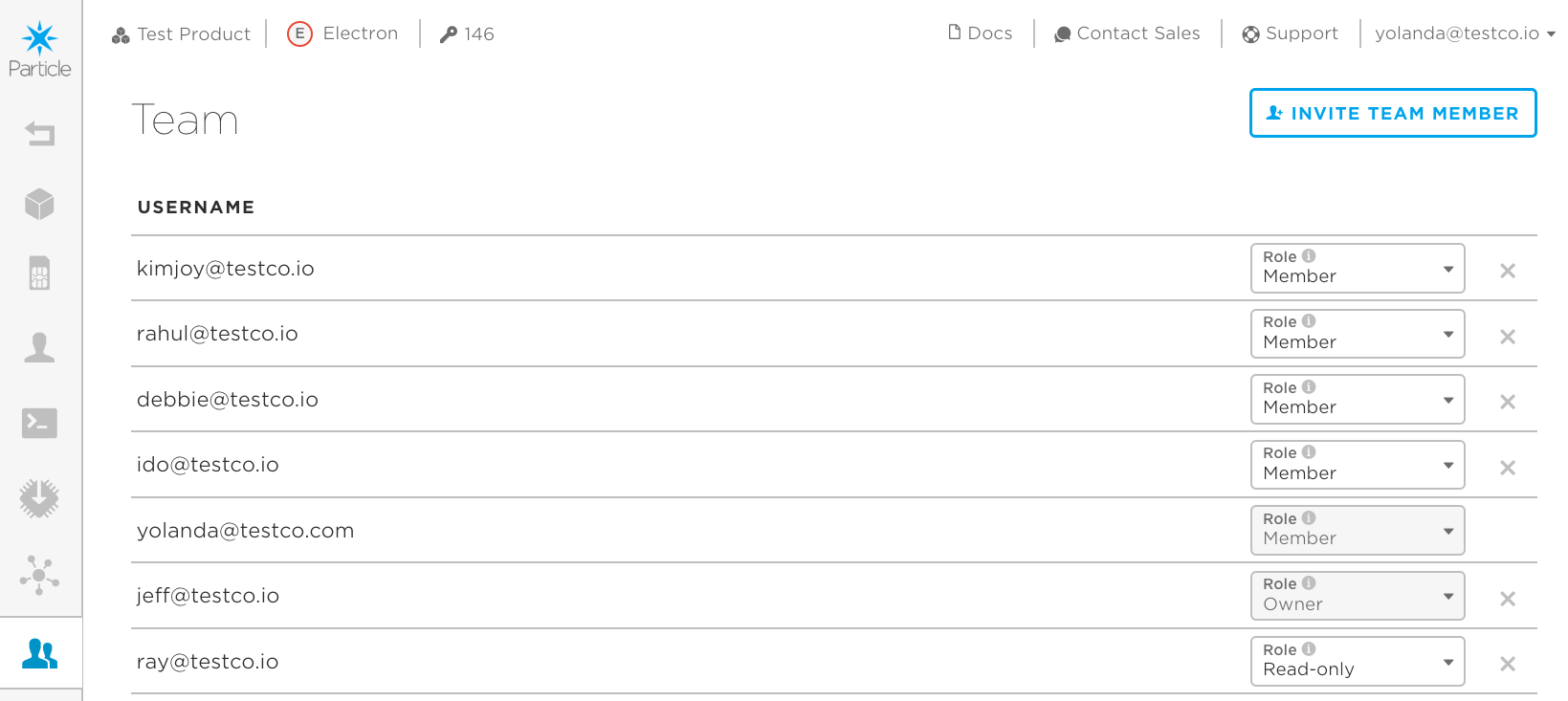Originally published at: https://blog.particle.io/2019/02/19/product-release/
Particle is committed to helping companies solve real business challenges through real IoT solutions. That’s why our latest software release includes new features that facilitate enterprise collaboration, minimize local IoT toolchain setup time, and enable you to build battery-powered IoT products that can last for years between charges.
Specifically, we released:
- Team Access Controls (beta) — a new feature to help businesses manage appropriate levels of access to your device fleets. Team Access Controls is an enterprise feature; reach out if you are interested in getting access.
- Particle Workbench, now available in the MFST VS Code Marketplace — our development environment for professional engineers has graduated from our early access program and is available for immediate download from the Visual Studio Code Marketplace.
- Device OS updates — a new Device OS release for Gen 3 hardware brings support for low power sleep modes and an easy-to-use cellular command API to access the powerful diagnostic and control features supported by the Boron’s cellular modem.
These new features were built in response to your feedback and with your needs in mind. We’re excited to roll them out and see how you use them to build real IoT products.
Team Access Controls — Protect your fleet with appropriate access
Team Access Controls — Set product roles for your company’s team members.
Your company’s device fleets are constantly growing and are likely managed by a cross-functional team within your organization. To protect your fleet, not everyone should have the same level of access to your company’s devices. Many just need visibility — while only a select few should have privileges to take managerial actions across the fleet.
Team Access Controls (Beta) is an all-new feature to help businesses manage appropriate levels of access to device fleets. With team access controls, you can assign roles (a set of permissions) to each member of your team.
This provides an extra layer of security for your device fleets — limiting each team members’ level of access to exactly what their role requires. You can view and set team-member-specific roles (owner, member, and read-only) for each product on the Team page in the Particle Console.
Team Access Controls is an enterprise only feature and is currently in beta. Over time, we plan to introduce more roles and granularity to the access controls capabilities of our platform. If you’re interested in using Team Access Controls, please consult our team of experts to get access as an enterprise client. To learn more on how Team Access Controls works, you can visit the docs here.
The newest Workbench features and release in the Microsoft Marketplace
Particle Workbench, released in alpha this past October, has graduated into beta and is now available for immediate download as a Developer Preview in the Microsoft VS Code Marketplace. Our most powerful IDE yet, Workbench is designed for IoT, and preconfigured out-of-the-box for Particle development.
Today’s release of Workbench includes enhanced debugging support for Gen 2 and Gen 3 hardware with the Particle Programmer and the Particle Debugger. Plus new quick commands for compile, flash, and adding the Workbench CLI to your PATH in the host OS. Plus, an easy direct link to Particle docs from within the Workbench menu.
With Workbench, you’ll cut your local IoT toolchain set up time to near-zero and get to coding and building your product faster. Here’s where to download and get started with the Workbench documentation.
Device OS update: Save more power and direct cellular debugging on Gen 3 Hardware
Particle’s Gen 3 hardware is already our most power efficient hardware yet, thanks to a brand new host controller and support for cutting edge cellular technologies like LTE M1. The newest Device OS release for Gen 3 adds support for Particle sleep modes that reduce power consumption to near-zero and make it possible to build battery powered IoT products that can last months or even years between charges. To dive into the details of using low-power sleep modes for Gen 3 devices, check out the new sleep mode documentation.
In addition to support for low-power sleep modes, our new Device OS release also adds support for the Cellular.command() API, which gives you access to all the features of the Boron’s on-board cellular modem. You can use this API to answer questions like – Am I connected with 2G or 3G? or What carrier is providing me connectivity? – and more easily debug tricky issues in development.
You can find the full Device OS release change log found here, and explore the open source Device OS repository here.
We encourage you to validate this release with your existing Particle applications and upgrade accordingly.
What’s Next?
Over time, we plan to layer on more functionality to our products that will allow you to improve collaboration and development for your device fleets. Stay tuned!
Your feedback on Particle software, hardware, and ongoing conversations with the Particle team have helped us shape our product with the right tools to support your success. We’re excited to hear what you think and what problem you’ll solve next.

